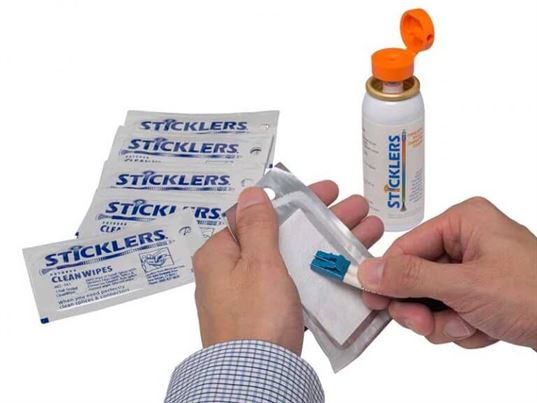Why Is Static a Problem on Fiber End-faces?
Static is an insidious actor when it comes to fiber optics. It comes from friction. Anytime two different materials are rubbed together there is a transfer of surface electrons that creates a static charge. The technical term for this event is “triboelectric charging.” This static charge turns the fiber optic end-face into a microscopic magnet, attracting dust out of the air right on to the heart of the end-face. Triboeclectric charging will occur when rubbing any nonconductive surface with any dry wipe such as a CLETOP, a foam swab, or a dry fabric wipe.
Common sources of static charge caused by contact friction in optical networks include:
- Dry wipe cleaning
- Insertion of inspection scopes and test gear into adapters
- Connector mating
- Equipment cooling fans and fans in the HVAC system
A common cause of static charge is using a dry wipe to clean connectors in low-humidity environments. Dry particulate has a very sly manner of moving on to fiber end-faces and causing network problems. For example, an operator will clean and inspect an end-face and see a pristine end-face. Then, the operator returns at a later date and finds troublesome dust particles on the end-face. How can this happen? Particles are attracted by the static and migrate towards the contact zone of the ferrule — exactly where it can cause the most problems. Because the static turned the end-face into a magnet, it just sucks particulate out of the air.
The problem is the process, not the particulate. The proper answer is wet-dry cleaning, proven by IPC and iNEMI to deliver better cleaning on fiber end-faces.

Sticklers CleanWipe Singles can be used in harsh environments with the Cleaning Fluid to get perfectly clean connectors under the most challenging circumstances.
